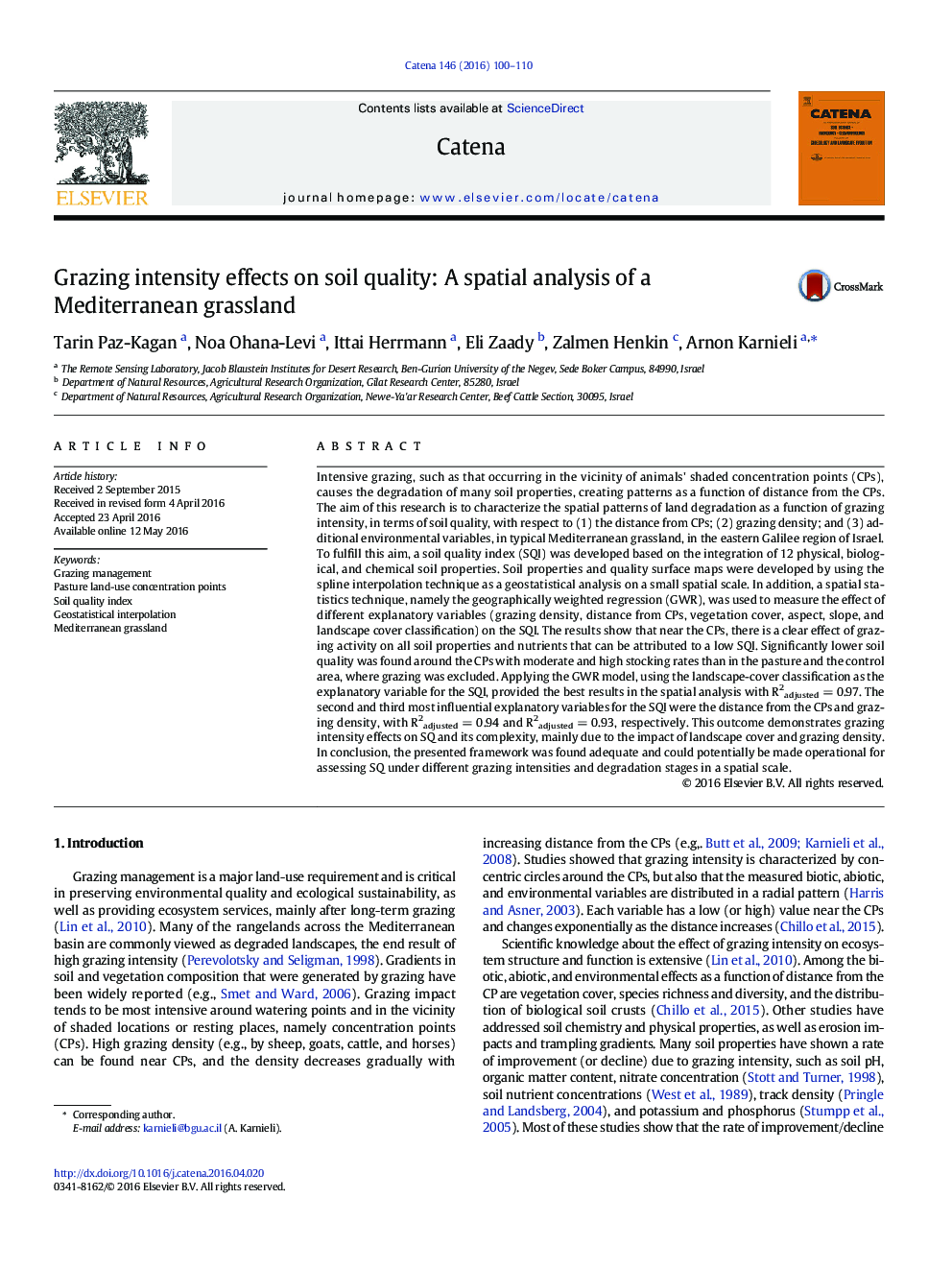| Article ID | Journal | Published Year | Pages | File Type |
|---|---|---|---|---|
| 4570869 | CATENA | 2016 | 11 Pages |
•The effect of grazing intensity on soil quality index (SQI) was studied.•Spatial statistics techniques were used to study grazing effects.•Effect of grazing density and additional environmental aspect were evaluated.•Vicinity of animals to watering points reduced soil quality.•SQI was best explained by landscape cover and grazing density pattern.
Intensive grazing, such as that occurring in the vicinity of animals' shaded concentration points (CPs), causes the degradation of many soil properties, creating patterns as a function of distance from the CPs. The aim of this research is to characterize the spatial patterns of land degradation as a function of grazing intensity, in terms of soil quality, with respect to (1) the distance from CPs; (2) grazing density; and (3) additional environmental variables, in typical Mediterranean grassland, in the eastern Galilee region of Israel. To fulfill this aim, a soil quality index (SQI) was developed based on the integration of 12 physical, biological, and chemical soil properties. Soil properties and quality surface maps were developed by using the spline interpolation technique as a geostatistical analysis on a small spatial scale. In addition, a spatial statistics technique, namely the geographically weighted regression (GWR), was used to measure the effect of different explanatory variables (grazing density, distance from CPs, vegetation cover, aspect, slope, and landscape cover classification) on the SQI. The results show that near the CPs, there is a clear effect of grazing activity on all soil properties and nutrients that can be attributed to a low SQI. Significantly lower soil quality was found around the CPs with moderate and high stocking rates than in the pasture and the control area, where grazing was excluded. Applying the GWR model, using the landscape-cover classification as the explanatory variable for the SQI, provided the best results in the spatial analysis with R2adjusted = 0.97. The second and third most influential explanatory variables for the SQI were the distance from the CPs and grazing density, with R2adjusted = 0.94 and R2adjusted = 0.93, respectively. This outcome demonstrates grazing intensity effects on SQ and its complexity, mainly due to the impact of landscape cover and grazing density. In conclusion, the presented framework was found adequate and could potentially be made operational for assessing SQ under different grazing intensities and degradation stages in a spatial scale.
Graphical abstractFigure optionsDownload full-size imageDownload as PowerPoint slide
